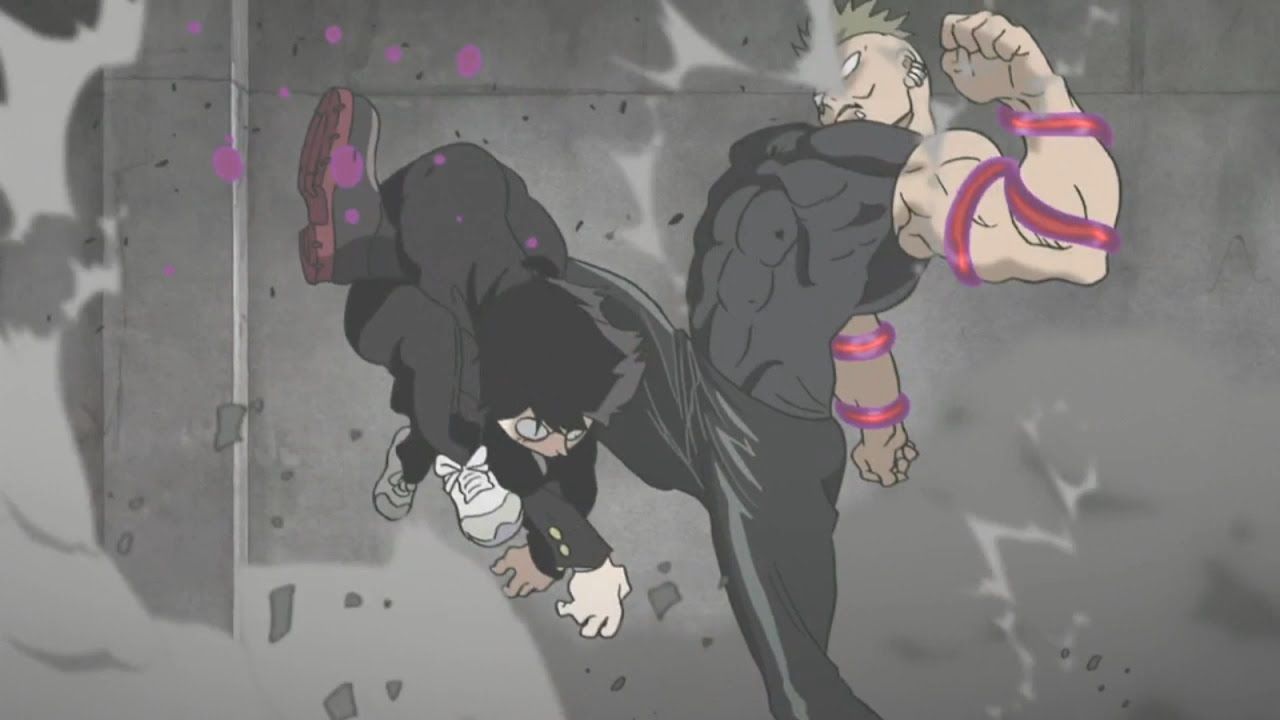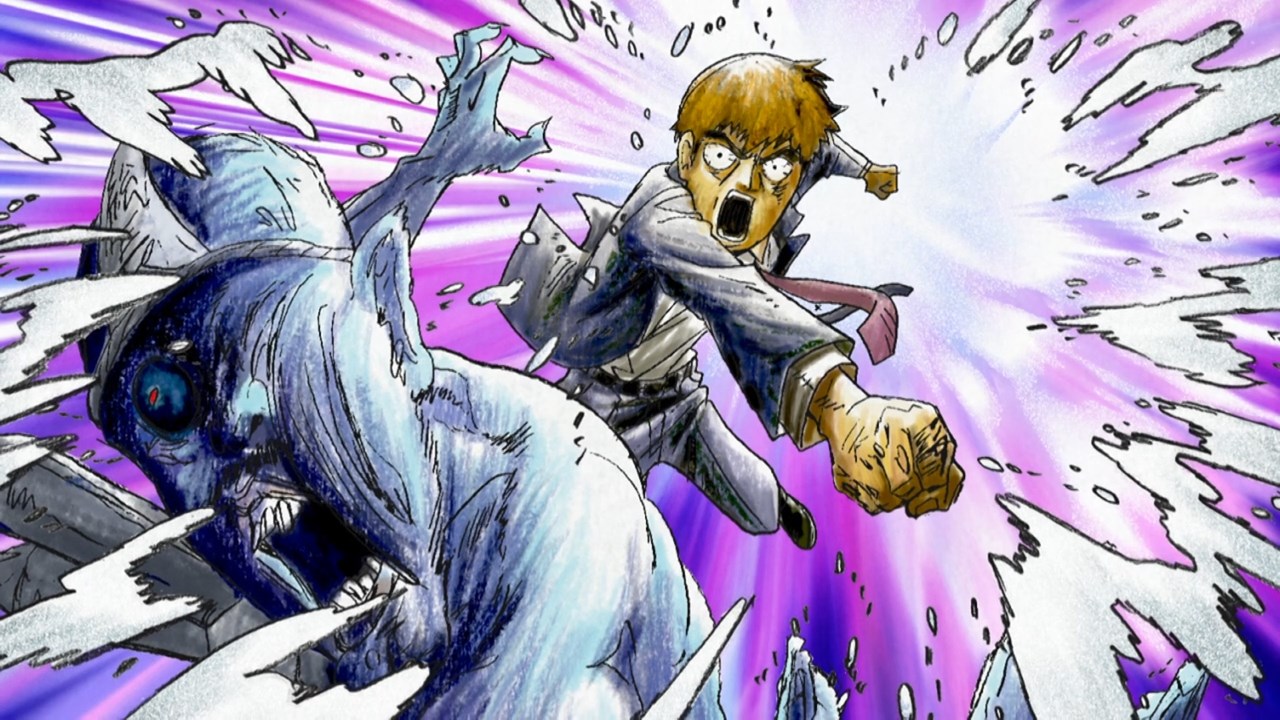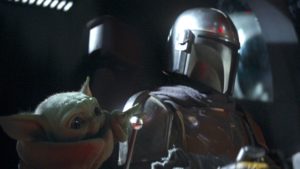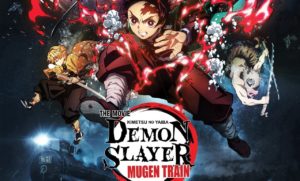
While webcomic writer ONE is probably best known for his extremely popular series One Punch Man, he is also the author of another slightly lesser known story, Mob Psycho 100. From a cursory glance, the two are very similar, both featuring over-powered protagonists that fuel a litany of meta jokes that poke fun at superhero and anime tropes. However, the main difference between the two is that this tale plays as far more earnest than the superhero satire in One Punch. The story stars Mob, a middle schooler who is an esper with incredible telekinetic powers. But despite his gift, he suffers from low-self confidence and a lack of friends, perceiving his abilities as something of a curse. He works part-time with Reigen, a conman and a self-proclaimed exorcism expert, who ironically serves as a voice of wisdom. Together the two eliminate evil spirits, while Mob and the rest of the cast wrestle with notions of natural talent, jealousy, and self-improvement.
The anime adaptation of ONE’s work has been handled by Bones, an acclaimed studio that largely specializes in adapting well-regarded action series. Their substantial animation connections with industry giants such as Yutaka Nakamura routinely leads to some of the medium’s most ingenious and fluid cuts, and Mob Psycho is no exception to this. The show may largely function as a coming of age dramedy, but its battle scenes convey the kinetic destruction of its espers through weighty inertia mixed with the occasional exaggeration of cartoonish slapstick. In one scene, Mob smashes an opponent into a concrete wall, drags him up the side of a building, flies into the clouds, and then slams him back into the Earth sending debris flying in an explosion. A sweeping arc shot captures the insanity as flashes of light and kaleidoscopic bursts of color accent the usage of psychic powers.

Although ONE’s character designs utilize very simplistic line art, this simplicity is what allows for the absurd range of motion during the fight scenes. And while much of the show’s aesthetic is defined by the relatively plain look of its characters, there is a great deal of ingenuity in the accompanying background art and presentation of gags. We get reaction shots with detailed cross-hatching, psychedelic collages outline Mob as he used his powers, and the color palette completely shifts to accent dramatic turns. The ED and some segments of the story utilize paint-on-glass animation, an intricate endeavor that produces a haunting and otherworldly effect.
This visual creativity amplifies both the comedy and drama, leading to punchy visual humor and ostentatious sakuga that complements major plot points. The story of Mob and his inner turmoil is delivered with a combination of levity and more grave drama, a tonal balancing act that capitalizes on both. In one scene Mob reflects on the loss of Dimple, a malicious spirit that he formed an unlikely faux-friendship with. Immediately following his exorcism we see a montage of the spirit saying awful things set against dramatic music that would normally serve to eulogize, a hilarious combination. But later in the same episode Mob wanders through the rain for two hours to find him in a complete state of dejection. This is just one example of how ONE and Bones are able to utilize the same story beat for both comedic and dramatic purposes.

But beyond its aesthetic strengths, animation chops, and tonal balancing, much of Mob Psycho’s appeal comes from its empathetic worldview. Although Mob wields absurd powers that differentiate him from almost everyone else in the world, it is always reiterated that this doesn’t somehow solve all of his problems. He still struggles with school, both in terms of fitting in and in terms of his academics. While most stories would utilize Mob’s powers for nothing but badass displays of his abilities (and don’t worry, they sometimes do), we also witness how his concerns about accidentally hurting others weigh on his conscience. It’s Mob’s earnestness and willingness to change that makes him such an endearing protagonist, and his interactions with the rest of the cast always play off of this earnestness.
Instead of functioning as a self-indulgent power fantasy, the story is a deft portrayal of the quest for self-acceptance, specifically in the context of dealing with natural talent. The two unhealthy extremes of dealing with our natural talents are to dismiss them as unimportant or to become entirely obsessed with them. Mob embodies the latter, viewing his powers as unnecessary and dangerous. Most of his enemies embody the former, letting their abilities corrupt them and undermine every other aspect of their personalities. This anti-Objectivist stance fits into the show’s thematic underpinnings, showcasing that while we all have natural talents, none of them make us inherently better than other people.

While I think Mob Psycho 100’s humor takes an episode or two to warm up to, and it takes a little while before major themes to surface, the reward for patience is quite worthwhile. It is one of the most visually creative action shows in years, using a combination of different art styles to deliver its big action moments, dramatic turning points, and gags. Its characters represent succinct summations of different philosophies concerning natural talent.
While Mob Psycho 100 Season 1 did a good job of tidily presenting these ideas, Season 2 has just recently begun with much of the same staff on board, and based on on the first two episodes it looks like it may even surpass the original. Mob Psycho is a rare show with a diverse set of appeals. It illustrates the blunders and successes of its characters with sympathy and humor, bolstered by an incredible sense of visual direction. It’s one of the strongest anime in recent years and an easy recommendation.







